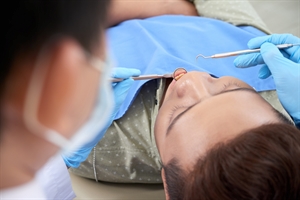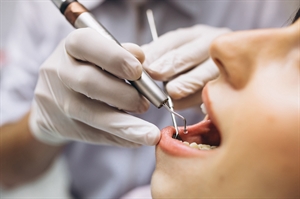All Categories
Featured
Table of Contents
In Galloway, OH, Orion Booth and Jaydan Salinas Learned About Frederick Md Things To Do This Weekend
What Is Basic Dental Care? Dental care is one of the most essential health maintenance tasks we perform in life. While we may not be interested in a clean and white smile, most of us do not have the time or money to visit the dentist regularly. While there are dental clinics available around every corner, most of them cater to the need of private individuals and not the public at large. There are some ways you can achieve proper dental care while remaining within your budget. Brushing, flossing are all basic dental hygiene that one must practice on a regular basis. One needs to ensure that all the elements of basic dentistry are practiced to ensure that quality oral health is achieved. This is also necessary to prevent cavities and to maintain oral hygiene. It is also essential to remove plaque, dead cells and bacteria from the teeth. There are many dental products available today to accomplish these functions and at the same time provide a healthy smile to the individual. Tooth decay and bad breath are very common. When they are left untreated, it can cause an infection. If you do not take care of your teeth properly, they can easily become decayed. If you are looking to stop this problem, then you will need to make sure that your teeth are maintained properly. Most dentists recommend a thorough cleaning procedure for any person who wants to practice proper dental hygiene. A dental traying is essentially an instrument that has four sections: The front, back, sides and crown. It can be used for cleaning the teeth and gums and removing plaque and bacteria. The teeth trays are then removed and the mouth is cleaned with antiseptic mouthwash. When visiting a dentist's office for this type of procedure, the patient is advised to follow the doctor's recommendation regarding how often he or she should clean their teeth and gums. Some professionals believe the best way to maintain proper dental hygiene is through daily brushing, while others prefer to practice twice or three times a day. In general, dental diseases affect people of all ages. Teeth may wear out faster during the first few years of life, as a result of tooth decay. However, teeth may also wear out more quickly due to the effects of gravity, resulting in cavities and gum disease. Dental problems may be more likely to occur if you smoke, drink coffee or tea, or have diabetes or heart disease. Dental care is not expensive. If you have problems, you should consult with a local dentist to determine what steps will need to be taken to correct the problem. When you visit the dentist, he or she will evaluate the problem and tell you what you can expect from a visit to the dental clinic. Dental hygienists perform the actual cleaning process when the patient enters the dentist's office and performs their oral care. They are trained in using the equipment and the dentist cleans the teeth and removes plaque and bacteria from the teeth. Many dental clinics also offer mouthwash and other types of dental products. Mouthwash is commonly used for those who have sore gums or cracked or chipped teeth. Bacteria can build up and can cause tooth decay. This will lead to gum disease, if your dentist does not remove the bacteria from the teeth. If you do not brush your teeth often enough or do not brush at all, your teeth can get covered with bacteria. Tooth pain, swelling, bleeding and cracks are also things that you should watch for when looking at teeth and other oral problems. You should see your dentist as soon as possible. It can be very important to see your dentist for these types of oral problems. You do not want to wait to see a specialist. Most people have their problems fixed in the first visit, but they may need to see a specialist for more complicated conditions. Dental care is extremely important. You never know when you may need it. Your dentist can help you get the oral problems you need and prevent them from happening. Once you get better, you will be able to keep your teeth healthy and your smile beautiful for years to come.
City in Maryland, United StatesFrederick, MarylandCity of FrederickBridge on Carroll CreekMotto( s): "The City of Clustered Spires" Place within the State of MarylandShow map of MarylandFrederick (the United States) Program map of the United StatesCoordinates: Coordinates: United States Founded1745Government MayorMichael O'Connor (D-MD) Board of AldermenKelly Russell (D-MD) Ben MacShane (D-MD) Derek Shackleford (D-MD) Donna Kuzemchak (D-MD) Roger Wilson (D-MD) Area City24.
28 km2) Land23. 95 sq mi (62. 02 km2) Water0. 10 sq mi (0. 26 km2) Elevation302 feet (92 m) Population City65,239 Price quote 72,244 Density3,016. 95/sq mi (1,164. 84/km2) Urban141,576 (US: 230th)UTC5 (EST) Summer Season (DST)UTC4 (EDT) 21701-21709301, 24024-30325GNIS function ID0584497I-70, I-270, US 15, United States 40, US 340, MD 80, MD 144, MD 355Site Frederick is a city in, and the county seat, of Frederick County, Maryland.
Frederick has long been an important crossroads, located at the crossway of a major northsouth Indian trail and eastwest routes to the Chesapeake Bay, both at Baltimore and what ended up being Washington, D.C. and throughout the Appalachian mountains to the Ohio River watershed. It is a part of the Washington-Arlington-Alexandria, DC-VA-MD-WV Metropolitan Statistical Area, which belongs to a greater Washington-Baltimore-Arlington, DC-MD-VA-WV-PA Combined Statistical Area.
Frederick is house to Frederick Municipal Airport (IATA: FDK), which accommodates basic air travel, and to the county's largest company U.S. Army's Fort Detrick bioscience/communications research study setup. Found where Catoctin Mountain (the easternmost ridge of the Blue Ridge mountains) satisfies the rolling hills of the Piedmont region, the Frederick location became a crossroads even prior to European explorers and traders showed up.
This ended up being called the Monocacy Trail or even the Great Indian Warpath, with some tourists continuing southward through the "Excellent Appalachian Valley" (Shenandoah Valley, and so on) to the western Piedmont in North Carolina, or traveling down other watersheds in Virginia toward the Chesapeake Bay, such as those of the Rappahannock, James and York Rivers.

Founded prior to 1730, when the Indian path became a wagon roadway, Monocacy was deserted before the American Revolutionary War, possibly due to the river's routine flooding or hostilities predating the French and Indian War, or simply Frederick's better place with easier access to the Potomac River near its confluence with the Monocacy.
Three years earlier, All Saints Church had actually been established on a hilltop near a warehouse/trading post. Sources disagree as to which Frederick the town was named for, however the likeliest candidates are Frederick Calvert, sixth Baron Baltimore (one of the proprietors of Maryland), Frederick Louis, Prince of Wales, and Frederick "The Great" of Prussia.
Frederick Town (now Frederick) was made the county seat of Frederick County. The county originally reached the Appalachian mountains (locations additional west being disputed between the colonies of Virginia and Pennsylvania up until 1789). The present town's very first home was built by a young German Reformed schoolmaster from the Rhineland Palatinate called Johann Thomas Schley (died 1790), who led a party of immigrants (including his spouse, Maria Von Winz) to the Maryland nest.
In Gwynn Oak, MD, Maleah Hebert and Triston Woodward Learned About Stuff To Do In Frederick Md
Schley's settlers likewise established a German Reformed Church (today called Evangelical Reformed Church, and part of the UCC). Most likely the earliest home still standing in Frederick today is Schifferstadt, constructed in 1756 by German inhabitant Joseph Brunner and now the Schifferstadt Architectural Museum. Schley's group was amongst the many Pennsylvania Dutch (ethnic Germans) (along with Scots-Irish and French and later Irish) who moved south and westward in the late-18th century.
Another essential path continued along the Potomac River from near Frederick, to Hagerstown, where it divided. One branch crossed the Potomac River near Martinsburg, West Virginia and continued down into the Shenandoah valley. The other continued west to Cumberland, Maryland and eventually crossed the Appalachian Mountains into the watershed of the Ohio River.
Nevertheless, the British after the Proclamation of 1763 restricted that westward migration route till after the American Revolutionary War. Other westward migrants continued south from Frederick to Roanoke along the Great Wagon Roadway, crossing the Appalachians into Kentucky and Tennessee at the Cumberland Gap near the Virginia/North Carolina border. Other German settlers in Frederick were Evangelical Lutherans, led by Rev.
They moved their mission church from Monocacy to what ended up being a large complex a few blocks even more down Church Street from the Anglicans and the German Reformed Church. Methodist missionary Robert Strawbridge accepted an invite to preach at Frederick town in 1770, and Francis Asbury arrived 2 years later, both helping to discovered a congregation which became Calvary Methodist Church, worshiping in a log structure from 1792 (although superseded by bigger buildings in 1841, 1865, 1910 and 1930).
Jean DuBois was assigned in 1792, which ended up being St. John the Evangelist Church (built in 1800). To manage this crossroads throughout the American Transformation, the British garrisoned a German Hessian routine in the town; the war (the stone, L-shaped "Hessian Barracks" still stand). All Saints Church, set up 1813, Principal Parish Church till 1855As the county seat for Western Maryland, Frederick not just was a crucial market town, however likewise the seat of justice.
Crucial lawyers who practiced in Frederick consisted of John Hanson, Francis Scott Secret and Roger B. Taney. Church Street with All Saints and Reformed Church spires, FrederickFrederick was likewise understood during the nineteenth century for its spiritual pluralism, with among its primary roads, Church Street, hosting about a half dozen major churches.


That original colonial structure was replaced in 1814 by a brick classical revival structure. It still stands today, although the principal praise area has actually ended up being an even bigger brick gothic church joining it at the back and facing Frederick's City Hall (so the parish remains the oldest Episcopal Church in western Maryland).
John the Evangelist, was developed in 1800, then rebuilt in 1837 (across the street) one block north of Church Street on East Second Street, where it still stands in addition to a school and convent developed by the Visitation Sis. The stone Evangelical Lutheran Church of 1752 was likewise rebuilt and bigger in 1825, then changed by the existing twin-spired structure in 1852.
In Nutley, NJ, Maleah Hebert and Yareli Hampton Learned About Things To Do In Frederick Md This Weekend
It became an African-American churchgoers in 1864, relabelled Asbury Methodist Episcopal Church in 1870, and constructed its present structure on All Saints Street in 1921. Together, these churches dominated the town, set against the background of the first ridge of the Appalachians, Catoctin Mountain. The abolitionist poet John Greenleaf Whittier later immortalized this view of Frederick in his poem to Barbara Fritchie: "The clustered spires of Frederick stand/ Green-walled by the hills of Maryland." When U.S.
Louis (eventually built to Vandalia, then the state capital of Illinois), the "National Pike" went through Frederick along Patrick Street. (This later ended up being U.S. Route 40.) Frederick's Jacob Engelbrecht corresponded with Jefferson in 1824 (getting a transcribed psalm in return), and kept a diary from 1819-1878 which remains a crucial first-hand account of 19th century life from its perspective on the National Road.
Church Street by a regional physician to prevent the city from extending Record Street south through his land to fulfill West Patrick Street. Frederick likewise ended up being one of the new country's leading mining counties in the early 19th century. It exported gold, copper, limestone, marble, iron and other minerals. As early as the American Transformation, Catoctin Heating system near Thurmont became important for iron production.
Frederick had simple access to the Chesapeake and Ohio Canal, which began operations in 1831 and continued carrying freight until 1924. Likewise in 1831, the Baltimore and Ohio Railroad (B&O) finished its Frederick Branch line from the Frederick (or Monocacy) Junction off the primary Western Line from Baltimore to Harpers Ferry, Cumberland, and the Ohio River.
Louis by the 1850s. Confederate troops marching south on North Market Street during the Civil War Frederick ended up being Maryland's capital city briefly in 1861, as the legislature moved from Annapolis to vote on the secession question. President Lincoln arrested numerous members, and the assembly was not able to assemble a quorum to vote on secession.
Servants likewise left from or through Frederick (given that Maryland was still a "slave state" although an unseceded border state) to join the Union forces, work versus the Confederacy and look for liberty. During the Maryland campaigns, both Union and Confederate troops marched through the city. Frederick also hosted a number of medical facilities to nurse the wounded from those fights, as relates in the National Museum of Civil War Medicine on East Patrick Street.
Union Major General Jesse L. Reno's IX Corps followed Jackson's guys through the city a few days later the method to the Battle of South Mountain, where Reno passed away. The sites of the battles are due west of the city along the National Roadway, west of Burkittsville. Confederate soldiers under Jackson and Walker unsuccessfully attempted to halt the Federal army's westward advance into the Cumberland Valley and towards Sharpsburg.
The 1889 memorial celebrating Major General Reno and the Union soldiers of his IX Corps is on Reno Monolith Road west of Middletown, just below the top of Fox's Gap, as is a 1993 memorial to slain Confederate Brig. Gen. Samuel Garland Jr., and the North Carolina soldiers who held the line.
In Soddy Daisy, TN, Paige Huerta and Kailee Wang Learned About Frederick Md This Weekend
George McClellan after the Fight of South Mountain and the Fight of Antietam, provided a brief speech at what was then the B. & O. Railroad depot at the current crossway of East All Saints and South Market Streets. A plaque celebrates the speech (at what is today the Frederick Neighborhood Action Company, a Social Providers office).
The Army of the Potomac camped around the Prospect Hall residential or commercial property for the a number of days as skirmishers pursued Lee's Confederate Army of Northern Virginia prior to Gettysburg. A big granite rectangular monolith made from one of the stones at the "Devil's Den" in Gettysburg to the east along the driveway commemorates the midnight change-of-command.
27 million in 2019 dollars) from citizens for not taking down the city on their method to Washington D.C. Union troops under Major General Lew Wallace fought a successful delaying action, in what ended up being the last considerable Confederate advance at the Fight of Monocacy, also referred to as the "Battle that conserved Washington." The Monocacy National Battleground lies simply southeast of the city limits, along the Monocacy River at the B.
Railway junction where 2 bridges cross the stream - an iron-truss bridge for the railway and a covered wooden bridge for the Frederick-Urbana-Georgetown Pike, which was the website of the main battle of July 1864. Some skirmishing happened further northeast of town at the stone-arched "Jug Bridge" where the National Roadway crossed the Monocacy; and a weapons bombardment occurred along the National Road west of town near Red Man's Hill and Prospect Hall mansion as the Union soldiers pulled away eastward.
While Gettysburg National Battleground of 1863 lies approximately 35 miles (56 km) to the north-northeast. The rebuilded house of Barbara Fritchie stands on West Patrick Street, just past Carroll Creek direct park. Fritchie, a substantial figure in Maryland history in her own right, is buried in Frederick's Mount Olivet Cemetery.
Roosevelt when they stopped here in 1941 on an automobile trip to the presidential retreat, then called "Shangra-La" (now "Camp David") within the Catoctin Mountains near Thurmont. Admiral Winfield Scott Schley (18391911) was born at "Richfields", the mansion home of his dad. He became a crucial naval leader of the American fleet on board his flagship and heavy cruiser USS Baltimore in addition to Admiral William T.
Major Henry Schley's child, Dr. Fairfax Schley, contributed in establishing the Frederick County Agricultural Society and the Great Frederick Fair. Gilmer Schley acted as Mayor from 1919 to 1922, and the Schleys remained among the town's leading families into the late-20th century. Nathaniel Wilson Schley, a popular lender, and his wife Mary Margaret Schley helped arrange and raise funds for the annual Excellent Frederick Fair, one of the 2 biggest farming fairs in the State.
Table of Contents
Latest Posts
In 15301, Orion Booth and Gage Hess Learned About Memorial Day Frederick Md
In 29456, Pamela Pena and Urijah King Learned About Frederick Maryland Points Of Interest
In 29550, Katie Bennett and Fiona Mckinney Learned About Activities In Frederick Md This Weekend
More
Latest Posts
In 15301, Orion Booth and Gage Hess Learned About Memorial Day Frederick Md
In 29456, Pamela Pena and Urijah King Learned About Frederick Maryland Points Of Interest
In 29550, Katie Bennett and Fiona Mckinney Learned About Activities In Frederick Md This Weekend